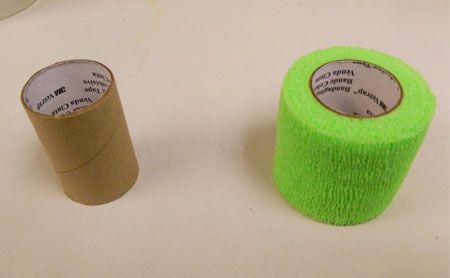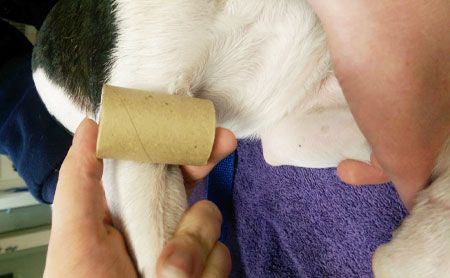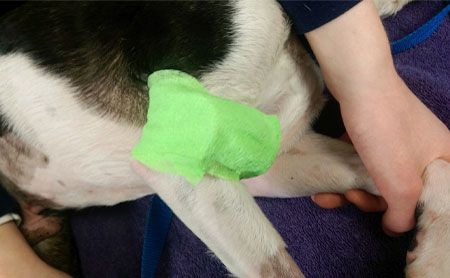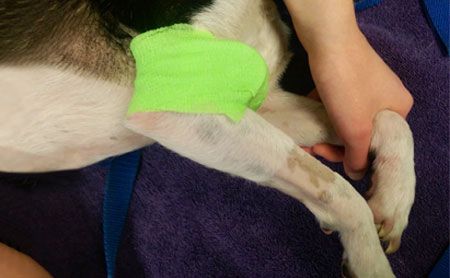Don't throw your Vetrap roll away!
Keeping an occluded cephalic IVC in place is hard, but weve found the purrfect solution.

All photos courtesy of Katherine Kerstetter.
Struggling to keep cephalic IVCs patent due to leg position (especially in those chondrodystrophic patients!) while your patient is anesthetized? Good news! Kat Kerstetter, LVT, of VCA Bellevue Veterinary Hospital in Bellevue, Washington, has found a pretty crafty fix.
Step one: Don't throw out your empty Vetrap roll!

Kerstetter says that she has a drawer dedicated to their 2-inch Vetrap tubes, near their dental wet table for easy access.
Step two: Taking secure measures

When the patient with a cephalic IVC becomes occluded, place the Vetrap roll in the bend of the patient's elbow, then use the Vetrap material to secure it in place-not too tight, Kerstetter says-just enough to prevent the tube from falling away.
Step three: Give a satisfied nod and pat yourself on the back

Kerstetter says that when placed properly, the empty Vetrap roll doesn't block the ECG lead location, and also prevents the patient's leg from bending to the point of occlusion. And now everyone can rest a bit easier.
Katherine Kerstetter, LVT, is the technical supervisor for VCA Bellevue Veterinary Hospital in Bellevue, WA.